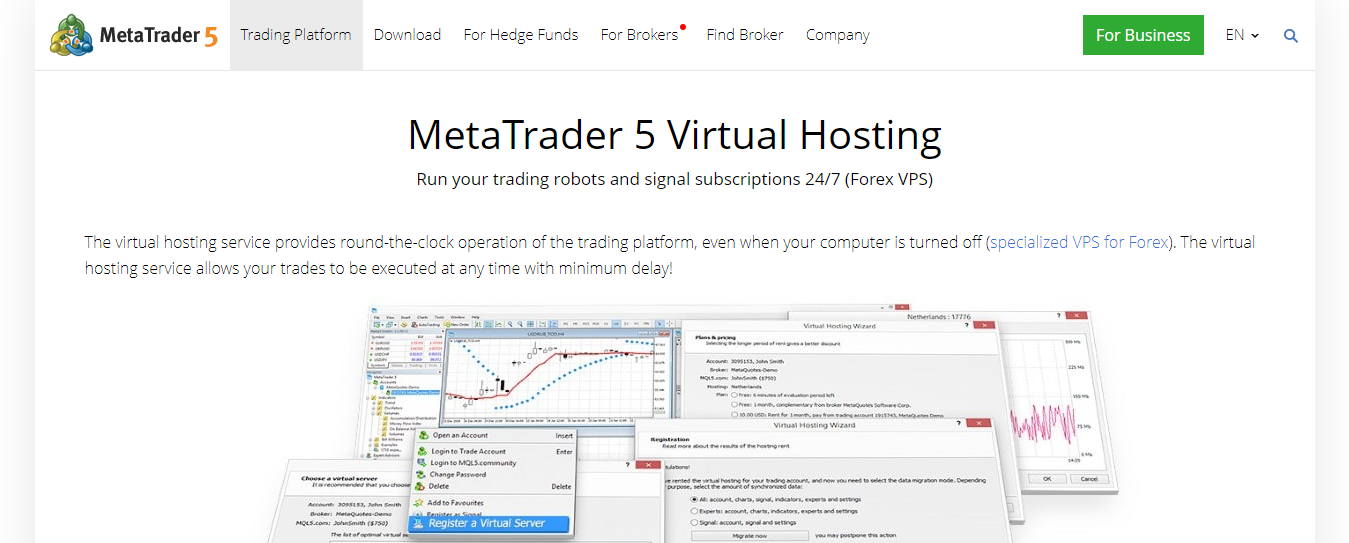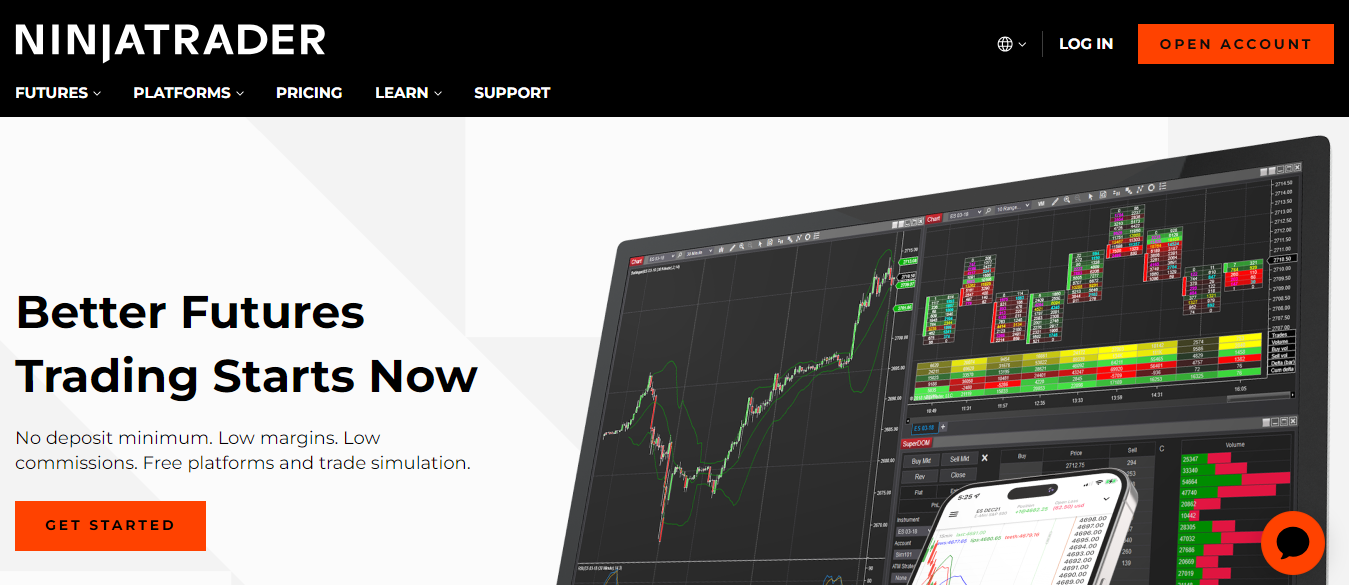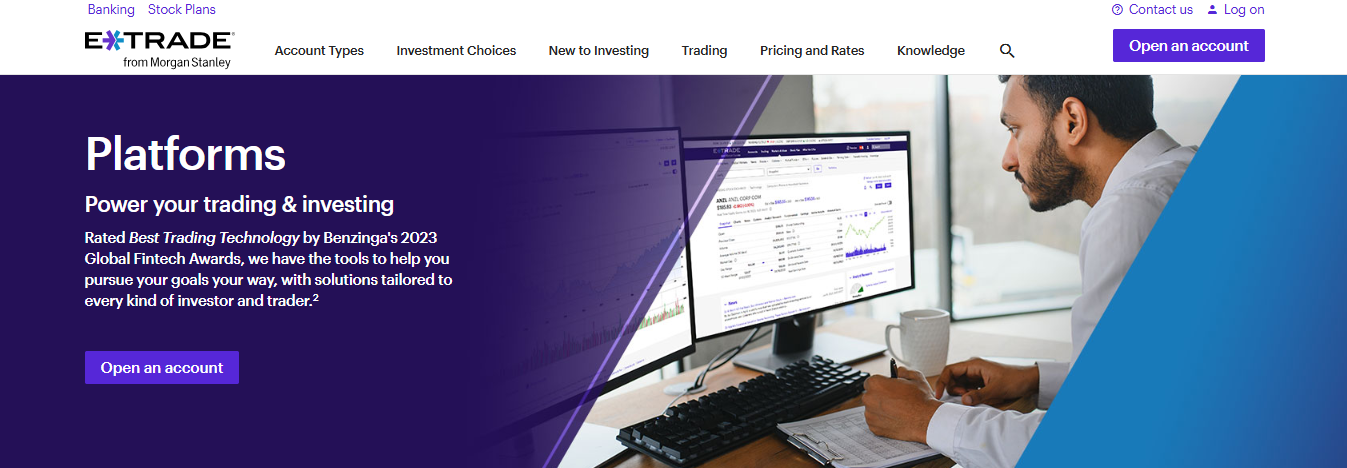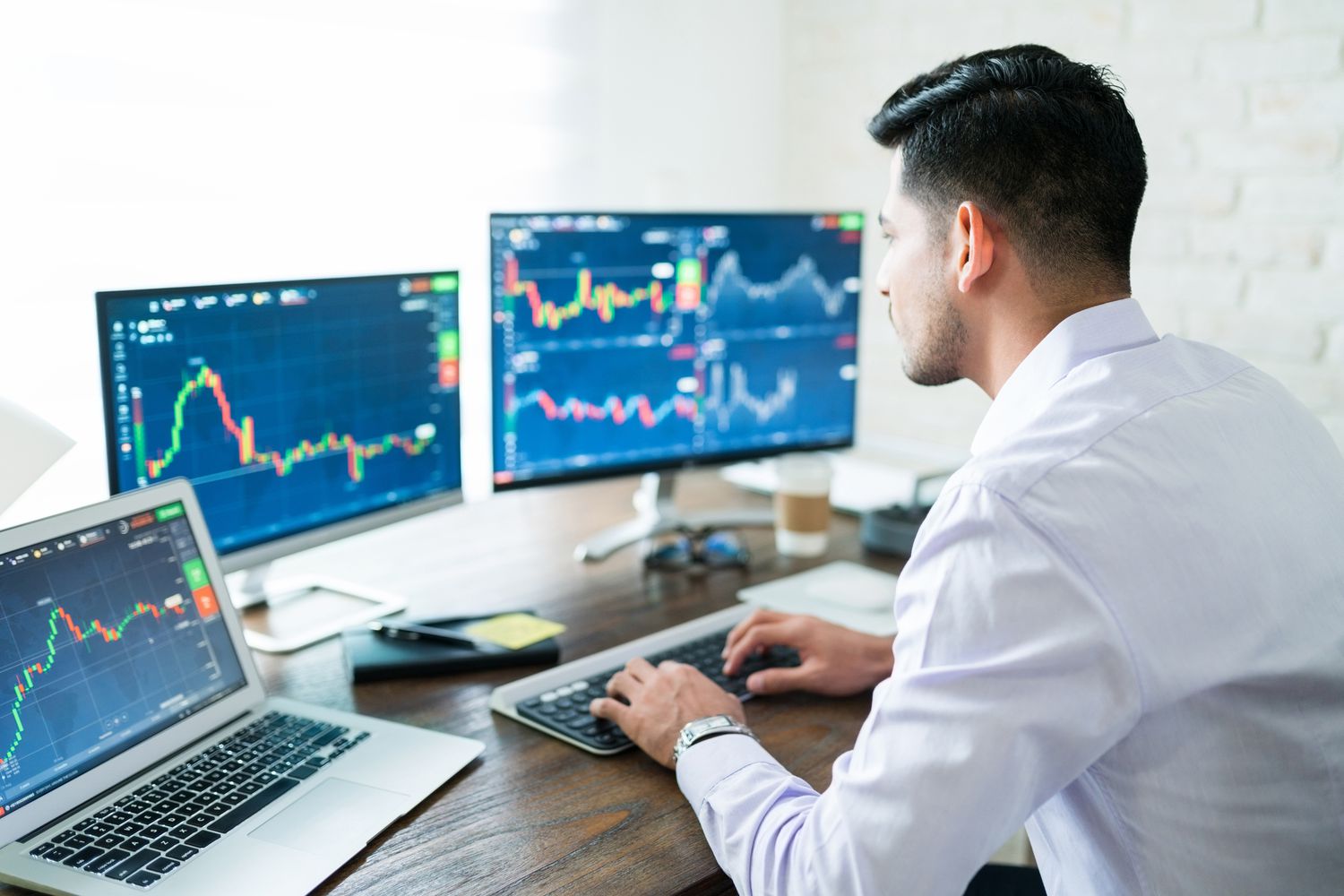Discover the 5 best automated trading platforms in 2025, compare features, and find the right tool to streamline your trading strategy.

Prices shift while you sleep, and headlines can flip a position in minutes. Trading Using AI turns that constant churn into automated signals, letting algorithmic strategies and trading bots place orders with speed and consistency. This guide breaks down platform reliability, broker integration, backtesting, risk management, and strategy automation so you can match a platform to your trading style and goals. What matters most to you: low latency execution, simple setup, or strong support for crypto, forex, and stocks?
Trading Bot Experts' best trading bots provide clear reviews, side-by-side comparisons, and hands-on guidance so you can confidently choose a reliable automated trading platform that fits your trading style and goals.

MetaTrader is a widely recognized and versatile automated trading platform favored by many traders worldwide. MetaTrader 4 (MT4) and its successor MetaTrader 5 (MT5) offer robust environments for forex and multi-asset trading, respectively. MT4 is known for its user-friendly interface and extensive customization options, making it particularly attractive to beginners and forex traders. On the other hand, MT5 expands on MT4 by supporting a broader range of financial instruments, including stocks, commodities, indices, and cryptocurrencies, making it a more comprehensive choice for advanced traders.

NinjaTrader stands out as a robust automated trading platform, especially designed for active traders and futures market participants. It offers comprehensive tools for advanced charting, strategy development, and trade simulation. NinjaTrader supports fully automated strategy execution, allowing users to design, backtest, and optimize trading algorithms with ease. Its interface is highly customizable, offering traders the

TradeStation is a powerful platform favored by professional traders for its high-speed execution and extensive automated trading capabilities. It supports trading across stocks, options, futures, and cryptocurrencies on a single platform. TradeStation offers a proprietary EasyLanguage programming environment that enables traders to build complex automated trading systems and custom indicators without advanced programming knowledge.

Interactive Brokers (IBKR) is a global brokerage platform with sophisticated automated trading features catering to professional and institutional traders. Their Trader Workstation (TWS) platform supports advanced algorithmic trading across multiple asset classes worldwide. IBKR provides an extensive suite of APIs and third-party platform integrations for automated strategy development and execution.
Strong security and regulatory compliance

E*TRADE’s Algo Wheel is an innovative automated trading solution that simplifies algorithmic trading for retail investors by rotating trades among different algorithms to balance risk and optimize returns. The platform provides access to multiple pre-built trading algorithms and automatically allocates capital among them based on performance. The Algo Wheel aims to democratize automated trading by enabling users to participate in diversified algorithmic strategies without deep technical knowledge.

Automated trading is a strategy in financial markets where computer programs execute trades based on a set of predefined rules. These programs monitor market data and automatically place buy or sell orders when certain conditions are met, without needing manual intervention. This method allows trades to happen quickly and efficiently, often faster than human traders could manage. By removing emotional decision-making, it helps traders stick to their plans and avoid impulsive errors.
The process begins with a trader or developer defining specific entry and exit rules for trades. These rules might be based on technical indicators, price movements, or other market signals. For example, one popular strategy uses moving averages, buying when a short-term average crosses above a long-term one, and selling when it crosses below. The software continuously watches the market and acts immediately when these conditions occur.
Automated trading works in various financial markets, including forex, stocks, and cryptocurrencies. It can handle multiple trades simultaneously and operate 24/7, making it suitable for fast-moving markets. However, the success of automated trading depends heavily on the effectiveness of the algorithm underpinning it. Algorithms based on established market behaviors like trend-following or mean reversion can be profitable over time, as they exploit natural market tendencies without human bias.
Despite its advantages, automated trading is not a guaranteed path to profits. The market is unpredictable, and many off-the-shelf trading robots sold online promise unrealistic gains, leading to losses for most users. Many retail solutions lack advanced machine learning or AI at their core and are often simplistic. Successful trading with automation requires robust algorithms and usually collaboration with professional brokers who support these strategies.
Trading Forex manually can be exhausting and repetitive, involving constant analysis and monitoring. Automated Forex robots, known as expert advisors (EAs) in platforms like MetaTrader 4, help by executing trades according to programmed strategies. Yet, even the best EAs are no one-stop solution and can be costly or inaccessible at times. Pairing these with trusted automated Forex brokers can enhance the potential for long-term profitability.
For traders looking for personalized help in navigating this complex space, Trading Bot Experts provide tailored recommendations. They assess individual trading needs and budgets to suggest the most suitable automated trading bots, helping traders optimize their strategies and avoid common pitfalls in the computerized trading industry. This support can be invaluable for those aiming to benefit from automated trading's efficiency while minimizing risks.
Which trading bot is right for you? Take our free Trading Bot Match Quiz and get a personalized recommendation based on your budget, goals, and risk tolerance in under 60 seconds, and receive a free ebook with honest reviews, performance stats, and red flags to watch when choosing the best trading bots. Click here to take the quiz and get your free report.

Choose a platform that matches your instrument, coding skills, and tolerance for technical setup. Popular choices include MetaTrader 4 and MetaTrader 5 for retail forex and CFDs, NinjaTrader and TradeStation for futures and equities, QuantConnect and QuantRocket for research and Python-based algo development, and broker APIs from Interactive Brokers, Alpaca, or Binance for direct API access. Look for reliable backtesting engines, API access, execution speed, low latency, VPS support, and an active developer community. Ask such as do you need a marketplace of prebuilt robots, a complete research IDE with tick data, or simple scriptable rules you can deploy quickly?
Decide whether to buy a prebuilt trading bot or develop your strategy. Buying saves time but can hide assumptions and risk. Building gives control and clarity about edge, entry, and exit rules, risk controls, and position sizing. Use languages supported by your platform: MQL4 and MQL5 for MetaTrader, C # for NinjaTrader, Python for QuantConnect, and custom broker APIs. If you use machine learning, keep models simple, limit lookback windows, and isolate training and validation to avoid overfitting. What metric defines success for you, such as profit factor, Sharpe ratio, or maximum drawdown
Run backtests on clean historical data and include realistic transaction costs, slippage, and spreads. Test over multiple market regimes and long periods using tick or high-frequency data when available. Run parameter scans but avoid brute force optimization that fits noise. Use out-of-sample testing and walk-forward analysis, and run Monte Carlo simulations to measure sequence risk. Track metrics such as net profit, max drawdown, Sharpe ratio, win rate, and trade distribution. If results collapse when you add realistic slippage or vary parameters, treat the strategy as fragile.
Pick a broker that provides the instruments you need, transparent commissions, and robust API or platform integration. Check regulatory status and execution quality, because delayed fills and order rejections kill strategies that depend on speed. Start with a paper trading or demo account to validate execution and data feeds exactly as in live trading. Confirm margin rules, overnight financing, and any restrictions on algorithmic trading before you go live.
Move from demo to a small live allocation, watch for differences between simulated and real fills, and only scale when live performance matches expectations. Use a virtual private server close to the broker for lower latency, and automate monitoring and logging. Implement a kill switch and hard risk limits that stop trading if drawdown exceeds preset thresholds. Automate alerts for failed orders, connection loss, or abnormal P&L so you can react fast
Host your execution on a stable VPS or cloud server with time synchronization and redundant backups for strategy code and historical data. Subscribe to reliable market data feeds and keep local copies of tick history for reproducible backtests. Use version control for your code and maintain test suites for new releases. Secure API keys and credentials with encryption and role-based access to prevent accidental exposure
Define maximum per-trade risk, daily loss limits, and portfolio level drawdown constraints. Use position sizing rules tied to volatility or equity percentage rather than fixed lot sizes. Consider diversification across uncorrelated instruments and strategy families to reduce tail risk. Run portfolio-level stress tests to see the effect of correlated losses on capital requirements.
Log every decision the algorithm makes, including signals, order placement, fills, and error conditions. Review trades regularly and compare live trades to backtest expected trades. Retrain or update parameters only when systematic changes appear in market behavior, and keep a changelog of all code updates. Set scheduled reviews for performance metrics and risk limits so adjustments remain disciplined
Keep trade records, order tickets, and system logs for audit and tax reporting. Verify that your broker permits automated strategies and follow any reporting requirements in your jurisdiction. Encrypt sensitive data, use two-factor authentication for accounts, and restrict access to production systems.
Markets change. Continuously research new data sources, alternative signals, and execution techniques. Run controlled experiments and paper tests before deploying changes to live capital. Ask peers for code reviews and use community resources and best practice guides to improve robustness.
Would you like a checklist you can follow to set up a first live test with small capital and monitored fail-safes?
.jpeg)
One of the foremost considerations is the reliability and security of the platform. Choose platforms with a proven track record, positive user feedback, and robust security measures such as two-factor authentication, data encryption, and regulatory compliance. Ensuring your funds and personal data are safely protected from cyber threats is paramount.
A good trading platform should offer an intuitive, user-friendly interface suitable for traders at all experience levels. The platform’s design should facilitate easy navigation without overwhelming the user. Access to a demo version can help test the experience before committing, helping ensure the platform matches your comfort level with technology.
Every trader’s approach is unique. An ideal platform allows customization of trading strategies, including parameters for risk management, trade sizes, stop-loss orders, and other specific settings. Platforms should support a range of trading indicators and technical analysis tools to help optimize strategy performance.
Before deploying strategies live, it is crucial to backtest them using historical market data. Strong platforms provide robust backtesting functionalities that enable traders to simulate performance and refine strategies based on past market conditions, thereby improving the likelihood of successful outcomes.
Different platforms specialize in various financial instruments (stocks, forex, cryptocurrencies, commodities), and more. Confirm the platform supports the asset classes you intend to trade to ensure compatibility with your investment goals.
Smooth integration with brokerage accounts and fast trade execution are essential for capitalizing on market opportunities, especially for high-frequency and day traders. Platforms should support multiple brokerages and offer real-time market data to enhance trading efficiency.
Responsive customer support available through multiple channels (phone, email, live chat) is vital when facing technical issues or needing guidance. Additionally, platforms offering educational content, tutorials, and community forums help users leverage the platform’s full potential.
Understand the pricing structure before subscribing. Fees may be charged per transaction, via monthly subscriptions, or through tiered plans. Choose a platform that aligns with your budget and offers clear, transparent pricing without hidden costs.
For AI-driven or algorithmic trading platforms, evaluating the sophistication of underlying algorithms (rule-based, machine learning, neural networks) is essential. Transparency about how strategies are formulated and updated adds confidence in the platform’s decision-making capabilities.
Platforms accessible on multiple devices, including mobile and desktop, provide flexibility for monitoring and managing trades from anywhere. Compatibility with third-party tools and various operating systems enhances versatility.

Automated trading systems perform at their best when there are no major scheduled economic announcements or central bank events. These events often cause unpredictable price swings and volatility, which can disrupt algorithmic trading strategies that rely on stable market behavior. During quieter times, algorithms can execute trades with greater predictability, reducing the risk of slippage and unexpected losses.
Trading in the absence of high-impact news allows automated systems to capitalize on steadier price trends and patterns. It is during these calm periods that the algorithm’s programmed logic can function smoothly without sudden shocks, making strategy execution more reliable and consistent over time.
Times of high liquidity, such as the opening and closing hours of major trading hubs like Tokyo, London, and New York, are especially favorable for automated trading. During these periods, the market has a large number of active participants, which means tighter spreads and faster trade executions. This environment enhances the ability of algorithms to enter and exit positions efficiently.
The overlap between the London and New York trading sessions is particularly noteworthy as the most liquid and active period in the Forex market. Automated systems thrive here because the increased volume and volatility can create more trading opportunities while still maintaining relatively low transaction costs, optimizing potential profits.
It is generally best to avoid running automated trading strategies during off-peak hours when market liquidity diminishes. These quieter periods, such as the times between major session closes and openings or weekends, often lead to wider spreads and less predictable price movements. Such conditions can hinder algorithmic performance and increase the risk of slippage.
Low liquidity also means that market orders can experience delays or execute at less favorable prices, impacting the effectiveness of automated trading. Algorithms reliant on rapid and precise executions may struggle, leading to suboptimal results and higher trading costs during these less active periods.

Automated trading systems remove human emotions from the trading process, preventing impulsive and irrational decisions influenced by fear, greed, or stress. This steadiness helps maintain discipline and stick to predefined trading strategies consistently, especially during volatile market conditions.
By eliminating emotional interference, automated trading significantly reduces the psychological challenges traders face. This helps minimize losses caused by hesitation, second-guessing, or chasing losses, ultimately fostering more rational and practical trading behavior.
Automated trading can operate around the clock, unlike manual trading, which is confined to market hours. This means the system can continuously monitor and execute trades across global markets and asset classes, ensuring that potential opportunities are not missed even when the trader is away.
Algorithms can execute trades in milliseconds, far faster than any human. This quick execution helps capture favorable prices, minimize missed opportunities, and place advanced orders such as stop-loss or trailing stops simultaneously with opening a position, increasing efficiency and profitability.
Automated systems can manage multiple trading strategies across various markets and asset classes simultaneously. This ability to diversify helps spread risk and take advantage of opportunities in different market conditions without requiring constant human supervision.
Since automated trading requires minimal screen time and manual intervention, it frees up traders to focus on strategy development or other activities. This reduction in hands-on monitoring also leads to lower stress levels compared to active manual trading.
Automated tools perform routine technical analyses and order placements systematically. This not only saves time but also removes errors or inconsistencies that can arise from manual repetition of these tasks.
.jpeg)
Automated trading robots available to retail traders often struggle to deliver consistent results. Many retail-level robots lack the sophistication needed to perform reliably over different market conditions. Their success can be sporadic, making them less dependable for sustained profits.
Automated systems generally operate based on predefined algorithms and historical data. They tend to falter during fundamental or sentiment-driven shifts in the market. When unexpected events or significant changes occur, these robots may fail to adapt quickly, resulting in losses or missed opportunities.
The best and most effective automated trading systems usually come at a high price. Quality algorithms, advanced technology, and ongoing updates require significant investment, making them unaffordable for many individual traders. This creates a barrier for retail traders seeking performance at a reasonable cost.
Many trading robots marketed to retail traders are either ineffective or outright scams. Many of these systems promise unrealistic returns without solid backing. This widespread issue underscores the importance of thorough research before purchasing any automated trading product.
Automated trading systems are vulnerable to technical glitches, software errors, connectivity issues, and other failures. Such problems can happen unexpectedly during live markets, causing unintended trades or losses that human oversight might have prevented.
Some automated strategies are excessively optimized based on historical data ("curve-fitting"), which may perform well in testing but poorly in real-world trading. This overfitting makes the system less robust when faced with live market variability.
Traders relying solely on automated systems might overlook crucial market insights and personal analysis. This dependency can put them at a disadvantage during unpredictable market conditions where human judgment remains valuable.

Which trading bot fits your time, budget, or risk profile? Take our free Trading Bot Match Quiz and get a personalized recommendation in under 60 seconds. The quiz maps your goals, asset class preferences, capital, and risk tolerance to a short list of recommended automated trading platforms and algorithmic trading systems. Click here to take the quiz and get your free report. The quiz also signs you up to receive a free e-book that compares bots across real-world metrics.
We ask targeted questions about capital size, preferred markets, hands-off versus hands-on control, coding ability, and acceptable drawdown. That lets us match you to options such as cloud-based copy trading platforms, desktop strategy builders, broker-integrated platforms like MT4 and MT5, or custom API driven algo frameworks. Which features matter most to you right now — low latency order execution, a community marketplace, or a no-code strategy builder?
The e-book gives honest reviews and performance stats for leading bots and robo-advisors. Expect backtest summaries, live track records, Sharpe and Sortino ratios, max drawdown, win rate, average trade, and slippage figures. We point out fee structures, subscription and profit share models, required capital, and typical maintenance needs for cloud-based or VPS-hosted bots. You will see screenshots of dashboards, sample strategy templates, and real-world trade examples for crypto bots, forex bots, and equity algorithmic trading systems.
We run strict backtesting, forward testing, and paper trading before listing a bot as recommended. Tests include walk-forward analysis, out-of-sample validation, and Monte Carlo stress tests to estimate drawdown ranges. We measure execution quality by tracking slippage, latency, and order fill rates across brokers and exchanges. We also audit code for risk controls such as stop loss, position sizing, and circuit breakers. Which validation metric do you trust most for a long-term strategy?
Click here to take the quiz and get your free report. The quiz also signs you up to receive a free e-book that compares bots across real-world metrics.